-
 Bitcoin
Bitcoin $108,489.6704
1.13% -
 Ethereum
Ethereum $2,502.0528
2.92% -
 Tether USDt
Tether USDt $1.0002
0.00% -
 XRP
XRP $2.1941
0.51% -
 BNB
BNB $655.3375
1.00% -
 Solana
Solana $151.5977
1.27% -
 USDC
USDC $0.9999
0.00% -
 TRON
TRON $0.2768
0.32% -
 Dogecoin
Dogecoin $0.1676
2.86% -
 Cardano
Cardano $0.5675
0.98% -
 Hyperliquid
Hyperliquid $40.6109
7.48% -
 Bitcoin Cash
Bitcoin Cash $500.7746
2.09% -
 Sui
Sui $2.8328
2.03% -
 Chainlink
Chainlink $13.4452
1.26% -
 UNUS SED LEO
UNUS SED LEO $9.1623
0.39% -
 Avalanche
Avalanche $18.2267
2.24% -
 Stellar
Stellar $0.2382
0.00% -
 Toncoin
Toncoin $2.8885
1.68% -
 Shiba Inu
Shiba Inu $0.0...01159
0.91% -
 Litecoin
Litecoin $87.1827
0.88% -
 Hedera
Hedera $0.1511
2.90% -
 Monero
Monero $315.4992
-0.59% -
 Polkadot
Polkadot $3.4663
2.34% -
 Bitget Token
Bitget Token $4.6118
-0.65% -
 Dai
Dai $1.0000
-0.01% -
 Ethena USDe
Ethena USDe $1.0003
0.02% -
 Uniswap
Uniswap $7.2989
4.69% -
 Pepe
Pepe $0.0...01003
5.73% -
 Aave
Aave $275.5616
7.15% -
 Pi
Pi $0.5181
-2.49%
Why does decentralization require a consensus mechanism? What are the advantages and disadvantages of PoW and PoS?
Consensus mechanisms like PoW and PoS are crucial for maintaining decentralization in blockchain networks, ensuring security and trust among nodes.
May 06, 2025 at 08:07 pm
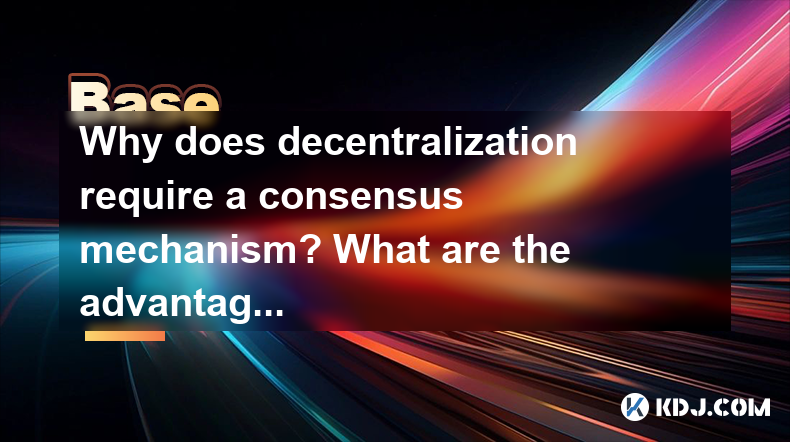
Decentralization in the cryptocurrency space refers to the distribution of power and control away from a central authority. This concept is fundamental to the ethos of many blockchain networks, which aim to create systems that are resistant to censorship, manipulation, and single points of failure. However, decentralization brings its own set of challenges, one of the most critical being the need for a consensus mechanism.
Consensus mechanisms are essential in decentralized networks because they allow disparate nodes to agree on the state of the blockchain. Without a central authority to dictate the validity of transactions and the order in which they are recorded, a method must be in place to ensure that all participants in the network can trust the data they are seeing. This is where consensus mechanisms come into play, enabling the network to function smoothly and securely.
The Role of Consensus Mechanisms in Decentralization
In a decentralized system, nodes operate independently, and each node may have its own version of the blockchain. To maintain the integrity of the network, these nodes must periodically synchronize their data. Consensus mechanisms provide the rules and processes that allow nodes to agree on a single version of the truth. This agreement is crucial for preventing issues such as double-spending, where a user attempts to spend the same cryptocurrency more than once.
Without a consensus mechanism, a decentralized network would be vulnerable to attacks and inconsistencies. For instance, if different nodes had different versions of the blockchain, it would be impossible to determine which transactions were valid. Consensus mechanisms solve this problem by providing a framework for nodes to reach a common understanding of the blockchain's state, thus ensuring the network's stability and security.
Proof of Work (PoW): Advantages and Disadvantages
Proof of Work (PoW) is one of the earliest and most widely recognized consensus mechanisms, famously used by Bitcoin. In PoW, nodes known as miners compete to solve complex mathematical puzzles. The first miner to solve the puzzle gets the right to add a new block to the blockchain and is rewarded with cryptocurrency.
Advantages of PoW:
- Security: PoW is highly secure due to the significant computational power required to solve the puzzles. This makes it extremely difficult for malicious actors to launch a successful attack, such as a 51% attack, where an entity controls more than half of the network's mining power.
- Decentralization: PoW encourages a decentralized network structure, as anyone with the necessary hardware can participate in mining. This helps prevent the concentration of power in the hands of a few.
- Proven Track Record: PoW has been successfully used by Bitcoin and other cryptocurrencies for many years, demonstrating its reliability and effectiveness.
Disadvantages of PoW:
- Energy Consumption: One of the most significant drawbacks of PoW is its high energy consumption. The mining process requires substantial computational resources, leading to a large carbon footprint.
- Centralization Risks: While PoW aims to be decentralized, the high costs associated with mining can lead to the concentration of mining power in the hands of a few large players, potentially undermining the network's decentralization.
- Scalability Issues: PoW networks can struggle with scalability, as the time and energy required to mine new blocks can limit the number of transactions the network can process.
Proof of Stake (PoS): Advantages and Disadvantages
Proof of Stake (PoS) is an alternative consensus mechanism that aims to address some of the shortcomings of PoW. In PoS, validators are chosen to create new blocks based on the number of coins they hold and are willing to "stake" as collateral. This approach is used by networks like Ethereum 2.0 and Cardano.
Advantages of PoS:
- Energy Efficiency: PoS is significantly more energy-efficient than PoW, as it does not require the same level of computational power. This makes it a more environmentally friendly option.
- Lower Entry Barriers: Unlike PoW, which requires expensive hardware, PoS allows anyone with a certain amount of cryptocurrency to participate in the validation process. This can lead to a more decentralized network.
- Security: PoS networks can be secure, as validators have a financial incentive to act honestly. If they attempt to validate fraudulent transactions, they risk losing their staked coins.
Disadvantages of PoS:
- Wealth Concentration: PoS can lead to the concentration of power among those who hold the most coins. This could potentially lead to a form of plutocracy, where the wealthiest participants have the most influence over the network.
- Nothing at Stake Problem: In PoS, validators might be incentivized to support multiple blockchain forks, as they have nothing to lose by doing so. This could lead to network instability.
- New and Untested: While PoS has been around for some time, it is still considered newer and less proven than PoW. Some argue that its long-term security and stability are yet to be fully demonstrated.
Comparing PoW and PoS in the Context of Decentralization
Both PoW and PoS have their unique approaches to achieving consensus in decentralized networks. PoW's reliance on computational power can lead to a more decentralized network, but it comes at the cost of high energy consumption and potential centralization of mining power. On the other hand, PoS's use of coin stakes can be more energy-efficient and accessible, but it risks concentrating power among the wealthy.
Decentralization is at the heart of both mechanisms, but they achieve it differently. PoW's decentralized nature is more about the ability of anyone to participate in mining, while PoS's decentralization is more about the accessibility of staking. Both methods have their merits and drawbacks, and the choice between them often depends on the specific goals and values of the blockchain network.
The Importance of Consensus Mechanisms in Maintaining Decentralization
The role of consensus mechanisms in maintaining decentralization cannot be overstated. They are the backbone of any decentralized network, ensuring that all participants can trust the integrity of the blockchain. Without a robust consensus mechanism, decentralized networks would be prone to manipulation and fraud, undermining the very principles they stand for.
In the world of cryptocurrencies, the choice of consensus mechanism is a critical decision that impacts the network's security, scalability, and environmental footprint. Whether a network opts for PoW, PoS, or another consensus mechanism, the goal remains the same: to create a system that is resilient, trustworthy, and truly decentralized.
Frequently Asked Questions
Q: Can a blockchain network switch from PoW to PoS?
Yes, a blockchain network can switch from PoW to PoS, but it is a complex process that requires careful planning and execution. Ethereum, for example, is in the process of transitioning from PoW to PoS with its Ethereum 2.0 upgrade. This involves significant changes to the network's infrastructure and consensus rules, and it must be done in a way that does not compromise the network's security or decentralization.
Q: Are there other consensus mechanisms besides PoW and PoS?
Yes, there are several other consensus mechanisms used in blockchain networks. Some examples include:
- Delegated Proof of Stake (DPoS): In DPoS, token holders vote for a small number of delegates who are responsible for validating transactions and creating new blocks.
- Proof of Authority (PoA): PoA relies on a set of pre-approved validators who take turns creating new blocks. This is often used in private or consortium blockchains.
- Proof of Capacity (PoC): PoC uses the available storage space on a node's hard drive to determine its mining power. This is seen as a more energy-efficient alternative to PoW.
Q: How does the choice of consensus mechanism affect the scalability of a blockchain network?
The choice of consensus mechanism can significantly impact the scalability of a blockchain network. PoW networks, like Bitcoin, can struggle with scalability due to the time and energy required to mine new blocks. This limits the number of transactions the network can process per second. PoS networks, on the other hand, can be more scalable, as they do not require the same level of computational power. However, the scalability of PoS networks can still be affected by factors such as the number of validators and the complexity of the staking process. Ultimately, the scalability of a blockchain network depends on a combination of its consensus mechanism and other factors such as block size and transaction processing speed.
Disclaimer:info@kdj.com
The information provided is not trading advice. kdj.com does not assume any responsibility for any investments made based on the information provided in this article. Cryptocurrencies are highly volatile and it is highly recommended that you invest with caution after thorough research!
If you believe that the content used on this website infringes your copyright, please contact us immediately (info@kdj.com) and we will delete it promptly.
- Ripple, Stablecoin, Adoption: RLUSD Leading the Charge
- 2025-06-30 14:30:12
- Bitcoin ETF, IBIT, and the Bull Flag: Is $144,000 on the Horizon?
- 2025-06-30 14:50:12
- Bitcoin, Passive Income, and a Bull Raise: Riding the Crypto Wave
- 2025-06-30 14:30:12
- Bitcoin, Personal Loans, and Omega 88: A New Era in Lending?
- 2025-06-30 15:09:14
- Saylor's Strategy: How MicroStrategy's Bitcoin Bet is Reshaping Finance
- 2025-06-30 14:52:14
- Metaplanet's Bitcoin Blitz: From Zero to Hero in the Corporate Treasury Race
- 2025-06-30 15:10:54
Related knowledge
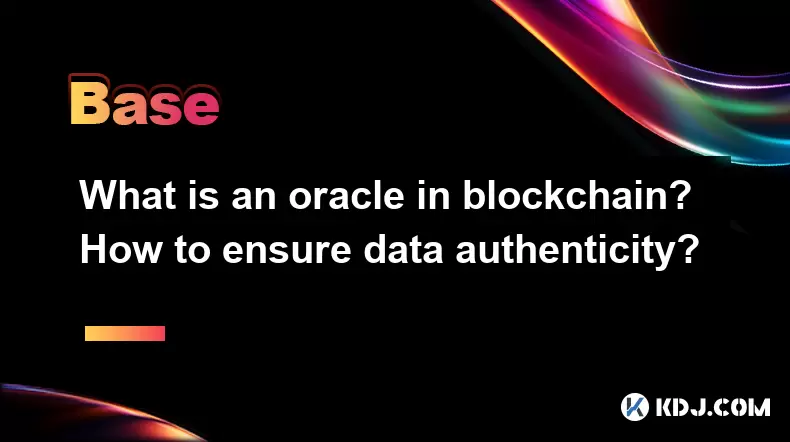
What is an oracle in blockchain? How to ensure data authenticity?
Jun 19,2025 at 08:49pm
Understanding the Role of an Oracle in BlockchainIn the context of blockchain technology, an oracle serves as a bridge between the blockchain and external data sources. While blockchains are inherently secure and decentralized, they cannot access real-world information on their own. Oracles enable smart contracts to interact with off-chain data such as ...
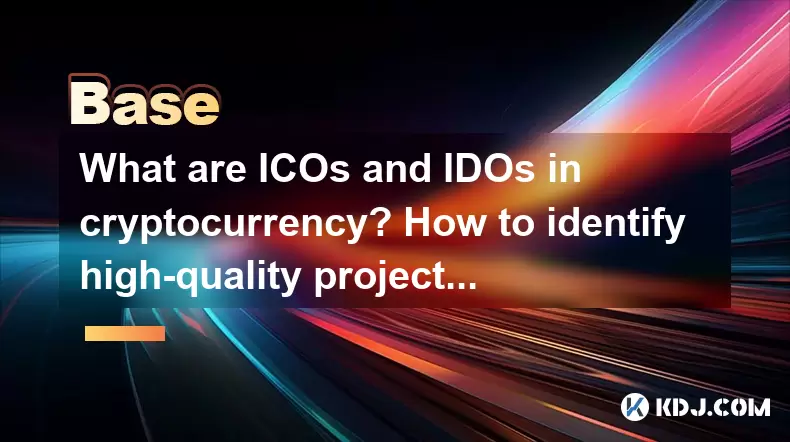
What are ICOs and IDOs in cryptocurrency? How to identify high-quality projects?
Jun 22,2025 at 11:49am
Understanding ICOs in CryptocurrencyInitial Coin Offerings (ICOs) are fundraising mechanisms used by cryptocurrency startups to raise capital for their projects. In an ICO, a company creates and sells its own tokens to investors in exchange for established cryptocurrencies like Bitcoin or Ethereum. The process typically involves the release of a whitepa...
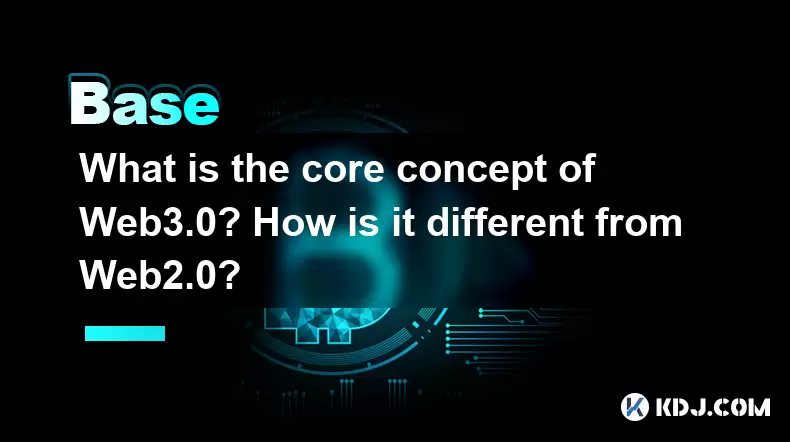
What is the core concept of Web3.0? How is it different from Web2.0?
Jun 21,2025 at 05:56pm
Decentralization as the Foundation of Web3.0The core concept of Web3.0 revolves around decentralization, which fundamentally challenges the centralized architecture of Web2.0. In Web3.0, control and ownership are distributed across a network rather than being held by a central authority or corporation. This is achieved primarily through blockchain techn...
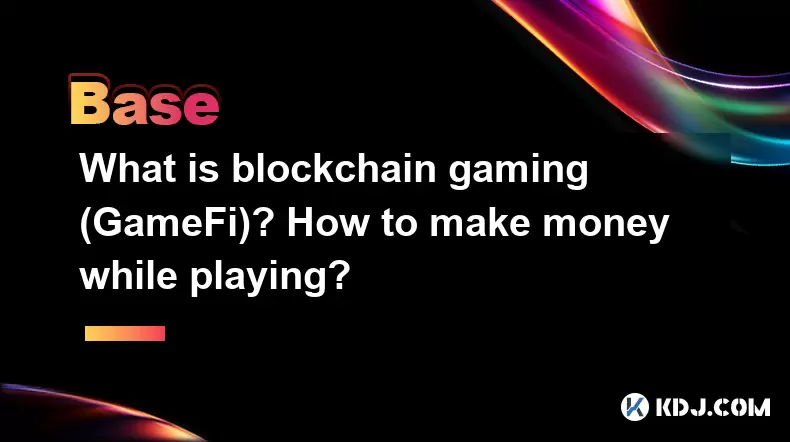
What is blockchain gaming (GameFi)? How to make money while playing?
Jun 20,2025 at 07:56am
Understanding Blockchain Gaming (GameFi)Blockchain gaming, often referred to as GameFi, is a fusion of blockchain technology and video games. It enables players to own in-game assets through non-fungible tokens (NFTs) and earn rewards via cryptocurrencies or token-based systems. Unlike traditional games where items are controlled by centralized develope...
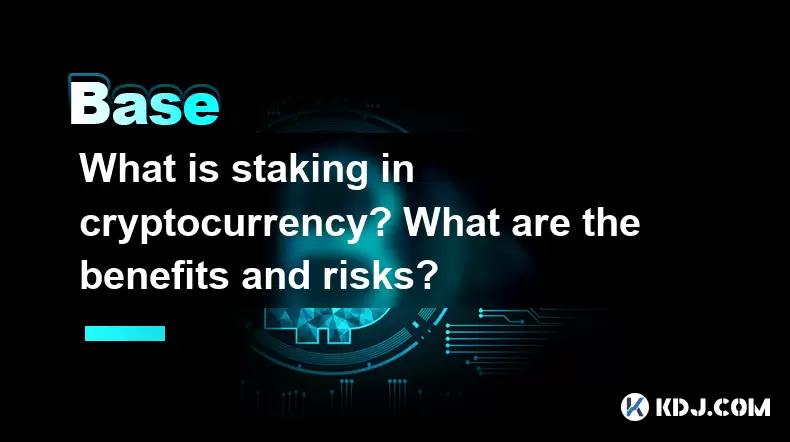
What is staking in cryptocurrency? What are the benefits and risks?
Jun 22,2025 at 10:01am
Understanding the Concept of Staking in CryptocurrencyStaking in cryptocurrency refers to the process of actively participating in transaction validation on a blockchain network that uses a Proof-of-Stake (PoS) consensus mechanism. Instead of miners competing to solve complex mathematical puzzles as in Proof-of-Work systems like Bitcoin, PoS blockchains...
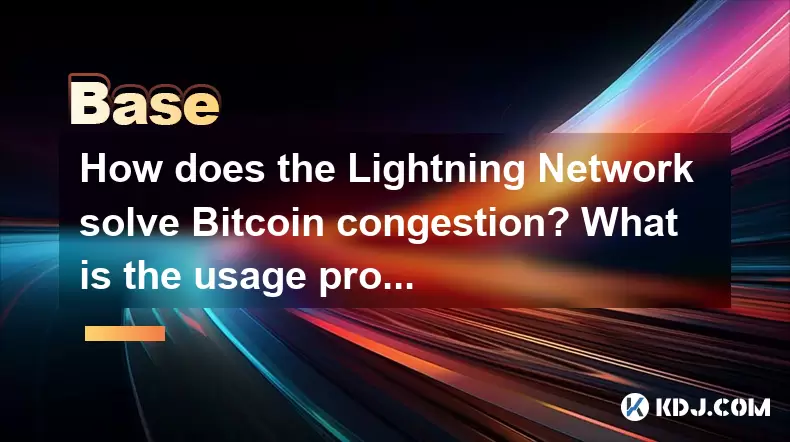
How does the Lightning Network solve Bitcoin congestion? What is the usage process?
Jun 23,2025 at 06:21pm
Understanding Bitcoin Network CongestionBitcoin, as a decentralized digital currency, operates on a blockchain that records every transaction in a public ledger. Each block has a limited size, typically 1 megabyte, which allows for only a certain number of transactions per second (TPS). When the number of transactions increases, the network becomes cong...

What is an oracle in blockchain? How to ensure data authenticity?
Jun 19,2025 at 08:49pm
Understanding the Role of an Oracle in BlockchainIn the context of blockchain technology, an oracle serves as a bridge between the blockchain and external data sources. While blockchains are inherently secure and decentralized, they cannot access real-world information on their own. Oracles enable smart contracts to interact with off-chain data such as ...

What are ICOs and IDOs in cryptocurrency? How to identify high-quality projects?
Jun 22,2025 at 11:49am
Understanding ICOs in CryptocurrencyInitial Coin Offerings (ICOs) are fundraising mechanisms used by cryptocurrency startups to raise capital for their projects. In an ICO, a company creates and sells its own tokens to investors in exchange for established cryptocurrencies like Bitcoin or Ethereum. The process typically involves the release of a whitepa...

What is the core concept of Web3.0? How is it different from Web2.0?
Jun 21,2025 at 05:56pm
Decentralization as the Foundation of Web3.0The core concept of Web3.0 revolves around decentralization, which fundamentally challenges the centralized architecture of Web2.0. In Web3.0, control and ownership are distributed across a network rather than being held by a central authority or corporation. This is achieved primarily through blockchain techn...

What is blockchain gaming (GameFi)? How to make money while playing?
Jun 20,2025 at 07:56am
Understanding Blockchain Gaming (GameFi)Blockchain gaming, often referred to as GameFi, is a fusion of blockchain technology and video games. It enables players to own in-game assets through non-fungible tokens (NFTs) and earn rewards via cryptocurrencies or token-based systems. Unlike traditional games where items are controlled by centralized develope...

What is staking in cryptocurrency? What are the benefits and risks?
Jun 22,2025 at 10:01am
Understanding the Concept of Staking in CryptocurrencyStaking in cryptocurrency refers to the process of actively participating in transaction validation on a blockchain network that uses a Proof-of-Stake (PoS) consensus mechanism. Instead of miners competing to solve complex mathematical puzzles as in Proof-of-Work systems like Bitcoin, PoS blockchains...

How does the Lightning Network solve Bitcoin congestion? What is the usage process?
Jun 23,2025 at 06:21pm
Understanding Bitcoin Network CongestionBitcoin, as a decentralized digital currency, operates on a blockchain that records every transaction in a public ledger. Each block has a limited size, typically 1 megabyte, which allows for only a certain number of transactions per second (TPS). When the number of transactions increases, the network becomes cong...
See all articles

























































































